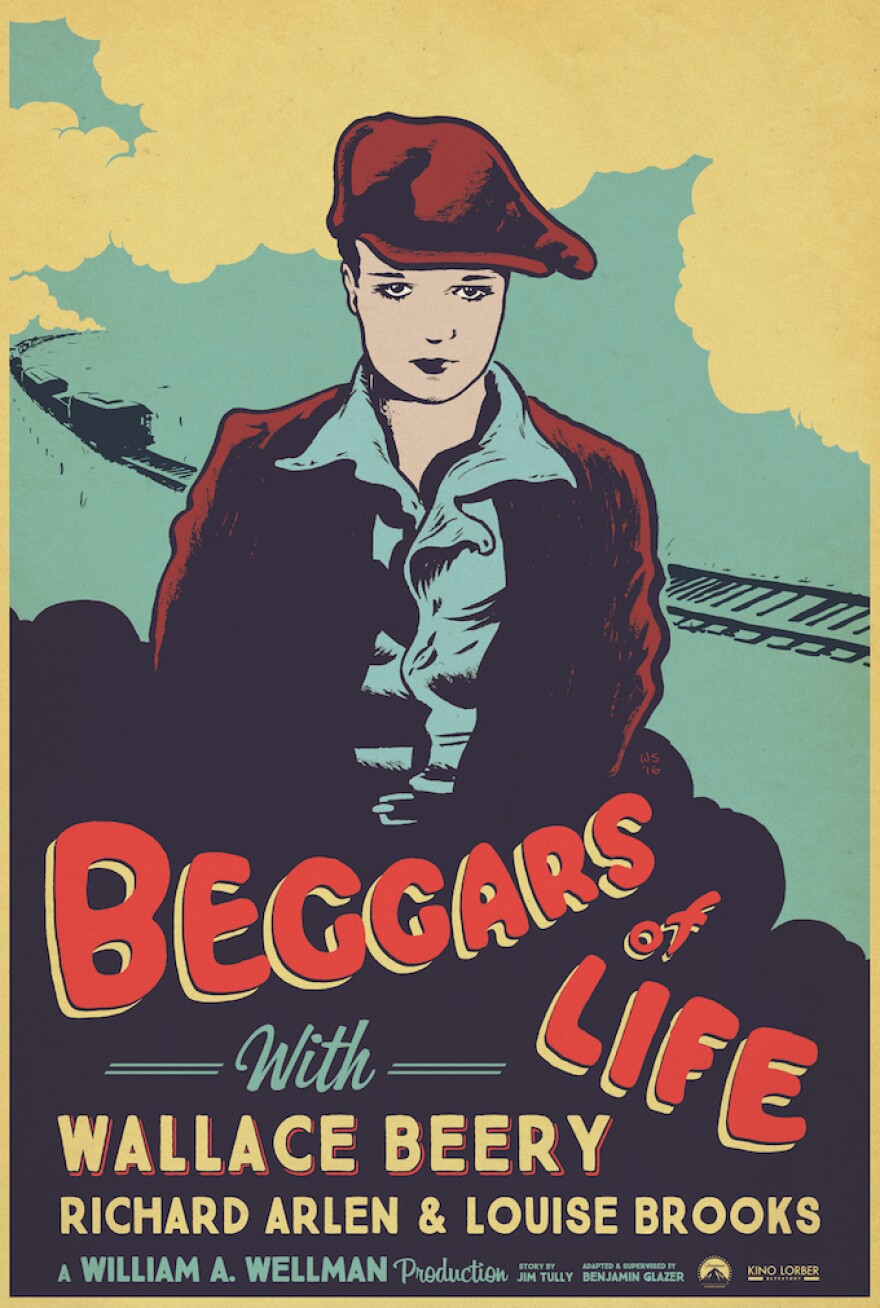In 1928, the stock market crash was still a year away, and director William Wellman, coming off the success of World War I epic “Wings,” turned to the downtrodden for his next feature, “Beggars of Life.” Adapting his autobiography into a fictional story of lovers on the lam, Jim Tully provided Wellman with a grim look at America that was ahead of its time.
Opening with a sequence that is shocking even today, a young drifter (Richard Arlen) stumbles into a farmhouse looking for food, only to find the farmer dead at his breakfast table. A girl (Louise Brooks) descends the staircase, and in a flashback, reveals how she shot him for attempted rape (described as “pawing” on the silent film's title cards of the time). He takes pity on her, and and Brooks, dressed in men’s clothing, leaves with him to ride the rails out of town.
What follows are a series of set pieces beginning with the introduction of Oklahoma Red, played by Wallace Beery. Despite less screen time than Brooks or Arlen, Beery was the biggest star of the three, and so received top billing for his role as the leader of a ragtag bunch of hobos. His outsized character is broadly played, but there are some tender moments as well, and Beery does a lot of acting with his body and face that really show him for the talent he was. Brooks is terrific here as well, in probably her best American role, just before moving on to Europe and great success in the films “Pandora’s Box” and “Diary of a Lost Girl.” Arlen—well, he grits his teeth well.
One of the things I love about watching silent films is the way they play both as documentaries of their time as well as drama or comedy. When sound arrived, clunky equipment kept cameras stationary and for the most part indoors for many years. Prior to that, directors could shoot anywhere they wanted, and so there are scores of features and shorts filmed at locations that have changed dramatically since the time they were shot. In the case of “Beggars of Life,” the film also depicts a way of existence—hoboing on the rails—that has largely disappeared. We even get an idea of the social strata that existed among the men who spent their days traveling by boxcar for work and nights huddled around a makeshift bonfire or sleeping in a haystack to keep warm.
The second half of the movie isn’t quite as strong as these opening scenes as time is spent allowing Arlen and Brooks to develop their relationship, but eventually “Beggars of Life” gets around to the cops chasing after Brooks since she’s wanted for murder. This leads to some amazing stunt work aboard a moving train during the climax of the film. And even though Arlen and Brooks get away, the film ends on a melancholy note, perhaps too much for the era of the Roaring Twenties. Today the movie feels contemporary, especially when Brooks, in a boy-cut, fights back against the lecherous farmer who’s taken her in as a ward. As scholar Thomas Gladysz notes on a commentary track, audiences back then probably thought nothing much about the farmer’s advances; nowadays, it’s clear she’s been abused and we’re glad when she pulls the trigger on him.
Gladysz, who’s the founding director of the Louise Brooks Society, also goes into great detail about the studio production of the film, and the stories of its stars (Did you know Richard Arlen spent time in Texas working the oil fields before moving to California? After being fired from an early film role, then breaking his leg, William Wellman spotted him outside the Paramount lot, took pity on him, and cast him in “Wings.”) There’s also another audio track featuring William Wellman, Jr., who recounts more production stories, and counters a few myths as well.
Kino Lorber’s reissue of the film is welcome, but one can only hope that they’ll bring it out for a second pressing some day that would make it even better. Why? Like “The Jazz Singer,” “Beggars of Life” was an early silent-talkie hybrid, with a few sequences featuring recorded sound. Sadly, those sound sequences are presumed lost. The musical score for “Beggars of Life” has been recreated by the Mont Alto Motion Picture Orchestra. The transfer to Blu-ray is about the best you can hope for from the surviving 35mm print. In all, this is a satisfying chapter in a great Hollywood director’s career.



